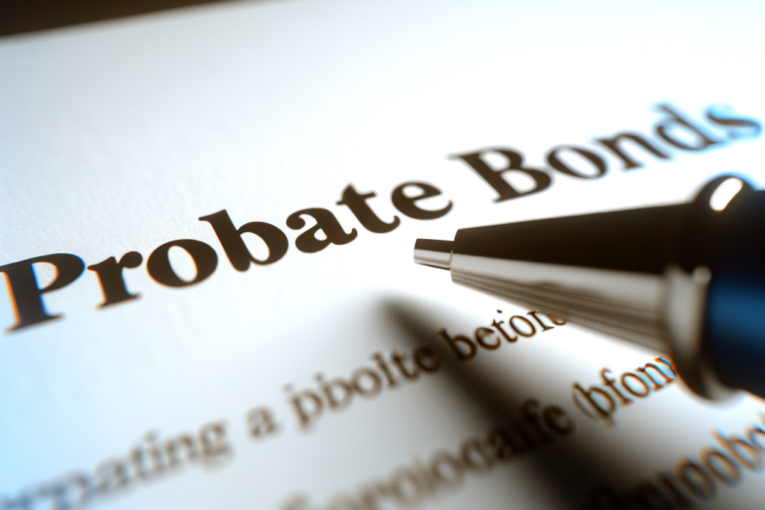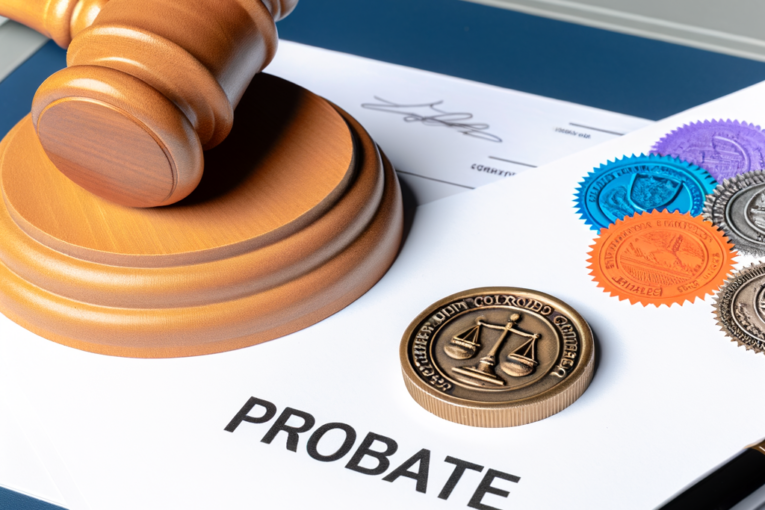An understanding of this subject is crucial, as it provides the legal mechanisms for conveying one’s wishes regarding how assets are to be distributed after death.
This article aims to elucidate the basic tenets of estate planning in an easy-to-understand manner.
It will provide insights into understanding one’s assets and liabilities, which is an integral part of this process.
Further sections will dive into drafting a comprehensive will—arguably the central instrument in any estate plan—as well as establishing trusts that can offer additional layers of protection and control over asset distribution.
The objective is to empower readers with knowledge on these vital topics so they may confidently navigate through their own planning processes or seek professional guidance armed with informed questions.
Key Takeaways
- A valid will is essential for distributing assets according to one’s wishes after death, and it may include provisions for guardianship of minor children or arrangements for pet care.
- Naming an executor is a significant decision, as they play a crucial role in coordinating and initiating the administration process after death, including tasks such as inventorying assets, settling liabilities, selling property, and paying taxes.
- Establishing trusts, such as living trusts, testamentary trusts, revocable trusts, and irrevocable trusts, is a useful tool for estate planning and asset management. They offer various benefits, such as avoiding probate, providing control over assets during their lifetime, offering flexibility or becoming irrevocable upon death, and providing tax advantages and asset protection.
- It is important to have a comprehensive guide to drafting a will and to understand the different types of trusts available to effectively plan for one’s estate.
What is Estate Planning?
Estate planning, a crucial aspect of financial management, encompasses the deliberate process of organizing an individual’s assets and determining how they will be distributed upon their death.
It is essential to understand its significance because it not only ensures that one’s wealth and assets pass to designated beneficiaries but also reduces potential legal issues and tax obligations.
The primary objectives of estate planning include:
- Preserving wealth for successors and ensuring financial security for the individual during their lifetime
- Reducing taxes on estates
- Providing a clear roadmap for asset distribution in accordance with the individual’s wishes
Why is Estate Planning Important?
Without proper estate plans, the deceased person’s property and other assets may not be distributed according to their desires but rather by state laws through a process known as probate. This impersonal government-run system might distribute one’s hard-earned wealth in ways they would never have intended or wished for, causing potential distress and conflict among surviving family members.
A well-crafted estate plan can offer significant protection against such undesirable scenarios. By utilizing tools such as wills and power of attorney documents, individuals can establish clear instructions about how they want their assets divided amongst their chosen beneficiaries after their death. An experienced estate planning attorney can guide individuals through this complex
Goals of Estate Planning
The central pillars of estate planning include maintaining control over assets during life and after death, reducing or eliminating taxes, ensuring the welfare of loved ones, and establishing clear directives for healthcare decisions and financial management if incapacitation occurs. These goals dictate the selection and design of legal documents such as wills, trusts, power of attorney assignments, healthcare proxies, living wills, and other instruments.
- Control: The principal objective in estate planning is to exert control over one’s assets: how they’re managed during life, how they’re protected against creditors or lawsuits, who inherits them, when inheritances are received, and what conditions govern their use.
- Minimize Taxes: A well-crafted estate plan can significantly reduce or even eliminate taxes by leveraging exemptions and deductions available under law.
- Provide for Loved Ones: Estate plans ensure not only material provision for loved ones but also appoint guardianship for minor children or dependents with special needs.
- Establish Directives: Clear directives regarding healthcare decisions (through a living will) or financial management (through a durable power of attorney) protect personal autonomy even in cases of severe illness or incapacity.
Understanding Your Assets and Liabilities
Establishing a thorough identification process for assets and liabilities, ascertaining their precise values, and unambiguously defining ownership along with beneficiaries associated with these assets can effectively achieve this.
Such measures not only ensure a meticulous appraisal of one’s current financial state but also lay the groundwork for effective wealth management strategies and future legacy planning.
Identifying Assets and Liabilities
Assets, in this context, refer to anything of value that an individual owns that can be converted into cash. These can range from real estate properties such as homes or land, personal property like vehicles, jewelry, or collectibles, to financial accounts at banks or investment firms.
Financial accounts may include checking and savings accounts, certificates of deposit (CDs), mutual funds, stocks, and bonds.
Other important estate assets also encompass life insurance policies and retirement plans such as 401(k)s or individual retirement accounts (IRAs).
In the digital age, digital assets are becoming increasingly significant. They comprise online banking accounts, social media profiles, email accounts, and digital files stored on computers or cloud-based services.
In essence, liabilities are debts that a person owes. Being able to accurately identify these is equally crucial in the process of estate planning. Some common forms of liability include:
Credit card debts: These could be outstanding balances on one or more credit cards.
Mortgages: If there’s any unpaid mortgage balance on owned real estate properties,
Auto loans: Any loans taken out for purchasing vehicles that have not been fully paid off.
Student loans: Outstanding student loans could potentially become part of an individual’s estate after their demise.
The meticulous task of identifying assets and liabilities provides a comprehensive view of the current financial standing, enabling individuals to plan adequately for life events through strategic asset distribution, including addressing potential tax implications.
Determining the Value of Assets and Liabilities
The process requires the help of professional estate attorneys and financial advisors to ensure a comprehensive evaluation.
Real property, such as houses and land, is typically assessed based on its current market value, which can be determined through comparative market analysis or a professional appraisal.
Similarly, the value of vehicles can be found using resources like Kelley Blue Book or the NADA Guide.
Personal belongings such as jewelry, art pieces, and furniture, among others, may require an appraiser’s services, especially when dealing with valuable items.
The valuation of liquid assets involves determining the current balance in bank accounts, investment portfolios including stocks and bonds, retirement accounts like 401(k) plans or IRAs, and digital assets such as cryptocurrencies.
These intangible assets directly contribute to your estate’s net worth.
For foreign assets, offshore bank accounts or real estate in other countries should also be considered within this valuation phase under guidance from experts well-versed in international laws pertaining to inheritances and estates.
In contrast to these are non-probate assets, which include those held jointly with a right of survivorship; these pass directly to the co-owner upon death without going through probate but must still be accounted for in overall estate planning given potential tax implications.
Clearly Defining Ownership and Beneficiaries of Assets
Clearly defining ownership allows for an effective division of assets among designated beneficiaries as per the estate holder’s intent. It is crucial to note that deeds or titles supersede any declarations made in wills; hence, every detail must be congruous across all estate plan documents. The names listed on these titles and deeds determine who inherits properties or other valuable assets, regardless of what the will stipulates.
Transferring property to a revocable living trust can help circumvent probate—a costly and time-consuming court process that validates wills and settles estates—thereby expediting asset distribution after one’s demise. The steps involved in this transfer typically include creating a trust document, appointing a trustee (who can also be the grantor), transferring property into the trust by changing ownership details on deeds or titles, and updating beneficiary designations where necessary.
What is a Will?
Drawing from the ancient practices of property distribution, a will, formally known as a ‘last will and testament,’ serves as a crucial component in estate planning.
It is a legally binding document that delineates the allocation of an individual’s assets and properties upon their demise. This legal process ensures that the deceased’s wishes regarding their inheritance are respected and executed accurately.
A well-drafted will can provide clear guidance to family members during what can be a distressing time, preventing any potential disputes over asset distribution.
Furthermore, a will covers more than just material wealth; it also addresses matters such as guardianship for minor children or arrangements for pets.
In cases where adult children are involved, specifying these details within the will can minimize conflict by clearly outlining duties and responsibilities. By avoiding ambiguity in this way, potential probate costs associated with resolving uncertainties in court could be significantly reduced.
Thus, understanding what constitutes a will and its importance is vital for effective estate planning.
Who Needs a Will?
People of all ages and socioeconomic status need a will. One group for which a will is crucial is those with children, as it ensures their well-being after the death of the parents by assigning guardianship rights according to current wishes.
Dependent Children: A will allows parents to nominate guardians for their minor children if they were to pass away.
Property Ownership: Whether it’s real estate properties or personal belongings like vehicles and jewelry, having a valid will helps dictate how these assets are distributed upon one’s death.
End-of-life wishes: A comprehensive aspect often overlooked is specifying end-of-life wishes in terms of medical care preferences and funeral arrangements.
Financial Investments: For those with substantial financial investments, such as stocks or bonds, indicating who inherits them can avoid potential disputes among beneficiaries.
Elements of a Valid Will
This article section focuses on three fundamental elements that contribute to the validity of a will:
- The testator (the person making the will) must be of ‘sound mind’, meaning they understand the nature and effect of their actions when creating the will.
- To confirm that they saw you sign the document, at least two people who are not beneficiaries of the will must attest to it.
- Some states accept handwritten or holographic wills; however, these also need to meet specific requirements, such as being dated and signed.
A valid will provides a contextually relevant framework for distributing assets according to your wishes after your death. It can go beyond simply dividing property among heirs; it could include provisions for guardianship of minor children or arrangements for pet care. Additionally, naming an executor—someone who ensures your instructions are carried out—adds another layer to its effectiveness during estate execution.
Naming an Executor in a Will
Appointing an executor in a will is a significant decision that necessitates careful consideration due to the considerable responsibilities that this role entails.
The executor, also known as an estate administrator or personal representative, acts as the coordinator and initiator of the administration process after one’s demise.
This individual is entrusted with fulfilling the instructions outlined in the will and managing all aspects of estate distribution, making it imperative to choose someone who is responsible, trustworthy, and capable of handling such tasks.
The duties assigned to the executor encompass various areas, including inventorying assets, settling outstanding liabilities, selling the property if needed, and ensuring all taxes are paid accurately and timely.
This person becomes crucial during estate planning since they provide assurance that everything will proceed smoothly even when one is no longer present to oversee operations personally.
Therefore, naming an executor should be done judiciously, keeping in mind their ability to manage these tasks effectively.
Establishing Trusts
Types of Trusts Available
Understanding the various types of trusts available, including living trusts, testamentary trusts, revocable trusts, and irrevocable trusts, is essential to navigating the complicated maze of estate planning.
Living Trust:
Purpose: To maintain control over assets during a lifetime and ensure smooth transfer upon death while avoiding probate.
Characteristics: The creator (also known as the grantor) acts as a trustee, managing assets in a trust, and can amend or dissolve it at any time.
Testamentary Trust:
Purpose: To provide detailed directives for asset distribution after passing away.
Characteristics: It gets activated only post-death based on explicit instructions mentioned in one’s last will and entails mandatory probate involvement.
On the contrary, Revocable Trusts—often referred to as revocable living trusts—are very similar to living trusts but offer greater flexibility as they can be altered or canceled by the grantor during their lifetime. However, these kinds of trusts become irrevocable upon death.
An irrevocable trust, once established, cannot be changed or terminated without consent from the beneficiaries—the individuals designated to receive benefits from the trust document.
Conclusion
Through careful estate planning, including understanding one’s assets and liabilities, drafting a will, and establishing trusts, one can ensure a smoother transition of wealth and minimize potential disputes.
Indeed, such forward-thinking actions are not just about personal gain or loss. They also provide an opportunity for individuals to leave a lasting legacy in accordance with their desires.
This underscores the crucial role of estate planning in managing life’s uncertainties, ironically offering control over aspects of life even after its conclusion.





